Biogas from rice straw (rice straw biogas production) is a proven technology that is still almost completely untapped. Around 300 million tonnes of waste rice straw is burnt in fields across Asia every year. Rice accounts for 48% of all greenhouse gas emissions from crops globally or 1,000 MT of CO2e/yr. Straw burning is producing smoke so thick it can block out the sun for days on end in the main rice-producing regions. This comes at a great cost in respiratory ailments and early deaths.
As the global population grows, more rice is produced, leading to yet more straw burning every year. And the sooty “black carbon” particles in the smoke are far more potent global warmers than the gases most people worry about, such as carbon dioxide.
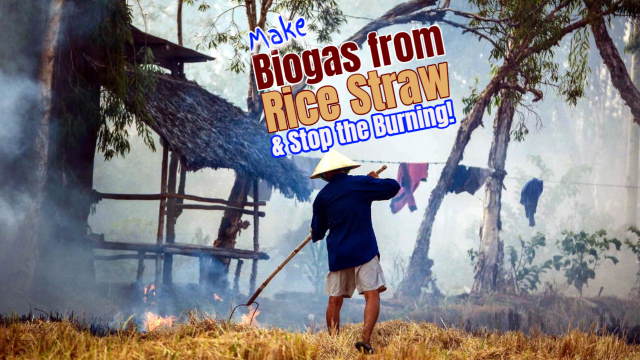
Straw Innovations
One company which believes it has the answer to this problem is Straw Innovations Limited, with biogas operations in Laguna in the Philippines.
What Straw Innovations are saying is revolutionary, because if implemented globally their plans for the anaerobic digestion of rice straw would transform this major waste into:
- A major asset as a renewable fuel source: locally produced 24/7
- Valuable compost or fertiliser that can build soil fertility
- Increased rice productivity, enabling three crops per year instead of just two
- A means of rural development and job creation, right where they are so much needed in the midst of developing nations.
A Global Vision for Rice Straw Biogas from Anaerobic Digestion
It is hard not to be impressed by the vision of their Director, Craig Jamieson, who recently presented to the World Biogas Association's eFestival attendees stating that:
“If all available rice straw were to be digested, it would reduce global CO2 emissions enough to offset all of the CO2 currently emitted by the entire global aviation industry (918 MT of CO2e/yr), leaving the resulting biogas from the anaerobic digestion process to power their farms and localities.”
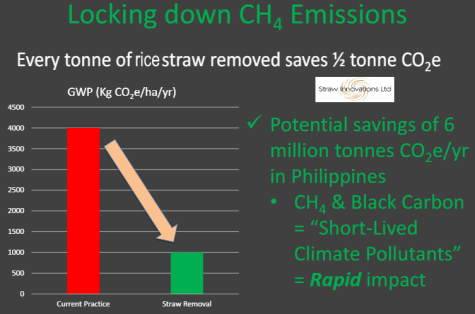
“It would also save a huge problem with rice straw stubble burning where 300 million tons are now being burnt every year, just in Asia. If you have ever visited cities such as Delhi in India during the rice straw burning season you will know just how appalling it is to have to live with the smoke that creates.”
“Governments are progressively banning the burning, but farmers frequently don't see any alternative, and therefore aren't complying. The race is on to find ways of using all global rice waste in a way that doesn't simply end up causing another problem to further impoverish the world's poor”.
Many local jobs would also be created to serve the biogas industry locally, and the need for importing energy from abroad in these nations would be greatly reduced.
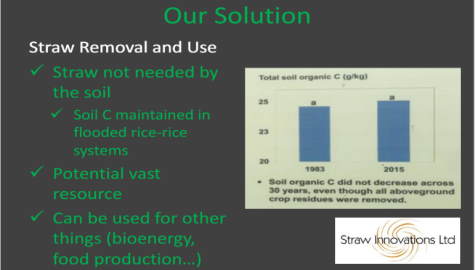
Rice Agronomics and “To Burn or Not to Burn”
The most obvious solution would seem to be simply returning the rice straw back into the soil. The problem is that it then rots in waterlogged ground, producing methane emissions. Methane is a greenhouse gas, approximately 25 times more potent than CO2.
Another disadvantage of returning it to the land is that waiting while the previous crop decomposes delays the establishment of the next rice crop.
Burning rice crop waste in the fields reduces methane emissions by 50%, but results in local air pollution, including black carbon which also traps heat in the atmosphere.
“Upland rice” or “aerobic rice” can be grown instead, where the fields are not flooded. Then the straw can be returned to the soil without the high methane emissions. However, upland rice suffers from lower yields and much greater weed problems, which require hand-weeding or the use of herbicide chemicals.
Other Solutions – Alternate Wetting and Drying (AWD)
A compromise is to alternate between flooding and draining rice fields. This can enable higher yields and reduced weed growth (as with flooded fields), but with reduced water use and lower methane emissions (because it’s not continuously flooded).
However, AWD can increase emissions of N2O – one of the most potent greenhouse gases – especially if not well managed, and the drying phase is not always possible in countries with heavy rain seasons.
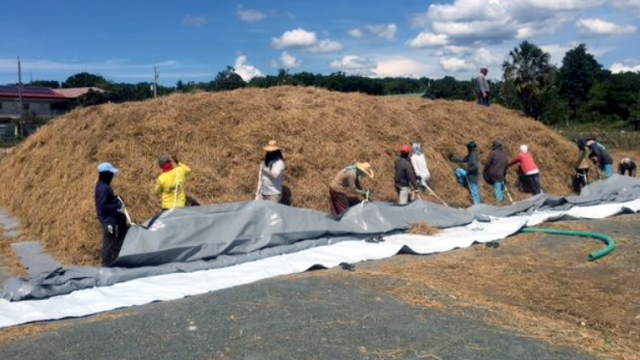
The “Straw Innovations Limited” Biogas Plant Solution
Straw Innovations Limited has been researching and developing rice straw biogas technology since 2017, partnering with Universities and other biogas companies keen to innovate in what, if their voice is heard, will become a $multi-billion industry.
Financial assistance has been provided by the UK Government, which has enabled them to trial an innovatively simple and low-cost dry anaerobic digestion process, with support from British universities and QUBE Renewables.
Their solution is to remove the rice straw from the fields and co-digest it with manure. With most crops, removing all the crop residues would lead to loss of organic matter in the soil, but with flooded rice-rice systems, this is not a problem. The lack of oxygen reaching the soil means that any organic matter breaks down more slowly.
Just leaving the crop roots in the soil after harvest provides enough organic matter to retain soil fertility; hence all the straw can be safely removed and used for other things. That being the case the collection and use of rice straw in the anaerobic digestion (AD) process can truly be a sustainable process.

Anaerobic Digestion of Rice Straw: a Big Opportunity
Anaerobic digestion has so far been adopted mostly in three areas of activity, using “wet AD technology” these being:
– Domestic and small community waste: in developing nations – especially China where several million low-tech biogas plants have been built and operated. They continue to provide much-needed clean fuel and fertiliser to rural communities.
– Municipal Wastewater Sludge Treatment from the Activated Sludge Process: in industrialised nations, these have been in use for more than 50 years but are being installed now at an ever-increasing rate to enable water companies to decarbonise their operations. The best of them are using their AD plant biogas to help power operations and move rapidly toward corporate goals for compliance with global decarbonisation targets arising from the 2015 Global Accord signed in Paris.
– Commercial: Large CSTR-type “Wet AD” Reactors for agricultural and food waste applications were originally developed to be fed by specially grown food crops, but this has now become rare due to the removal of government subsidies and tax breaks from food crop use. Nowadays such plants are fed mostly with crop wastes instead It is far more sustainable to sell the food crop while digesting only what remains after the food (grain, fruit, berry) has been harvested.
The numbers of these plants globally are rising each year and the pace of development is accelerating. The decomposed contents of the digester are returned to the land as fertiliser, creating a sustainable, ‘closed-loop’ cycle.
All 3 “wet AD” applications above are now well-proven and attracting mainstream investment. However, Straw Innovations are using a novel, “Dry AD” batch process.
Dry Anaerobic Digestion
“Dry AD” refers to biogas production using less water (20% dry matter or above) and is also now a mature technology, used until now mostly for local government-funded MSW pre-treatment. “MSW pre-treatment” is essentially anaerobic digestion/ biogas extraction which governments require to reduce the biological activity of the waste before the organic content of mixed MSW is allowed to be disposed to a landfill.
Straw Innovations has adapted the dry AD process for rice straw biogas and if they have their way dry digesters will become far more popular.

Rice Straw Biogas – The Next Big Opportunity for Anaerobic Digestion
The view of everyone at Straw Innovations Limited is that now is the time for the AD industry to move into the Anaerobic Digestion of rice straw, and by so doing the rice-producing nations can also join with the rest of the world in using AD technology to decarbonise their economies at little or no net cost.
Dry AD technology is well-proven and should attract investment from banking institutions, as Straw Innovations prove its application for rice straw.
While implementing this technology for rice straw biogas they will also benefit from the many spin-off advantages of anaerobic digestion processes.
Not least will be the benefit of removing the deathly annual palls of smoke from straw burning, now blighting the rice-growing nations of the world.
The anaerobic digestion of rice straw must surely be a massive opportunity right in front of our eyes!
For more information, see Straw Innovations at www.strawinnovations.com or on Facebook https://www.facebook.com/
Understanding the Potential of Biogas Production from Straw, and Other Uses for Straw
In recent years, there has been increasing global interest in finding sustainable and renewable sources of energy. One such potential source is biogas production from straw. Straw, which is abundantly available as a byproduct of various agricultural practices, holds great promise in terms of generating clean energy.
The Process of Biogas Production
Biogas, a mixture of carbon dioxide and methane, is produced through the anaerobic digestion of organic matter such as straw. This process involves the breaking down of the organic material by bacteria in the absence of oxygen. This not only helps in reducing the environmental impact of disposing of straw residues but also harnesses its energy potential.
Benefits of Biogas Production
Straw, due to its high carbon content, possesses significant energy value, making it an ideal feedstock for biogas production. The anaerobic digestion of straw not only generates biogas but also leaves behind a nutrient-rich digestate, which can be used as an organic fertilizer, thus closing the loop in sustainable agriculture. Furthermore, biogas produced from straw can be used as a renewable energy source for various applications.
Applications of Biogas
Biogas can be utilized for electricity and heat generation, replacing conventional fossil fuels and reducing greenhouse gas emissions. Biogas can also be upgraded to biomethane, a substitute for natural gas, and used as a transportation fuel or injected into the natural gas grid.
The Potential of Straw as a Raw Material
Straw, often viewed as a byproduct of agricultural practices, possesses immense potential as a raw material in various industries. This versatile material holds promise in sectors such as construction, packaging, and biofuel production, making it an attractive option for sustainable and eco-friendly resource utilization.
Straw in Construction and Packaging
In the construction sector, straw can be used as a building material in the form of straw bales. Additionally, straw can be utilized as a component in composite materials. Its fibrous structure lends itself well to the production of biodegradable and compostable packaging materials.
Straw as Biofuel
Furthermore, straw can play a vital role in the production of biofuels, particularly in the form of cellulosic ethanol. By extracting sugars from straw and converting them into ethanol, a renewable and cleaner fuel alternative can be obtained.
Overcoming Challenges of Biogas Production through Mechanical Pretreatment of Straw
In recent years, the demand for renewable energy sources has soared, leading to a significant rise in biogas production as an alternative to fossil fuels. However, the efficiency and sustainability of biogas production face challenges, particularly in the utilization of straw as a feedstock.
The Role of Mechanical Pretreatment
To address these challenges, mechanical pretreatment techniques have emerged as a potential solution. By subjecting straw to various mechanical forces, such as milling, grinding, or extrusion, the physical structure can be altered, improving its digestibility.
Benefits of Mechanical Pretreatment
Mechanical pretreatment enhances the accessibility of microbial enzymes to the straw's lignocellulosic matrix, promoting hydrolysis and facilitating the release of fermentable sugars. This leads to increased microbial activity, accelerated methane production, and enhanced biogas yields.
Exploring Alternative Uses for Straw
In recent years, there has been a growing interest in finding alternative uses for straw, a byproduct of the agriculture industry that has traditionally been deemed as waste. The exploration of alternative
uses for straw has become imperative as our society seeks sustainable solutions to address environmental challenges and promote economic viability in various sectors.
Straw in Agriculture
One promising application of straw is in agriculture itself. Straw can be used as a natural and organic mulch that helps retain moisture in the soil, suppresses weed growth, and regulates soil temperature. It also enriches the soil as it decomposes, providing valuable nutrients to plants.
Straw in Renewable Energy Development
Furthermore, straw can play a crucial role in the development of renewable energy sources. Through processes like anaerobic digestion or thermal conversion, straw can be converted into biogas or biofuels, contributing to the reduction of greenhouse gas emissions and addressing the escalating demand for clean and sustainable energy.
Straw in Other Industries
Apart from agriculture and energy sectors, straw can find applications in various other industries. For instance, it can be used in the production of sustainable packaging materials, replacing single-use plastics and reducing waste. Additionally, straw can be utilized as a raw material in the manufacturing of paper, textiles, and construction materials.
[Article first published July 2020.]


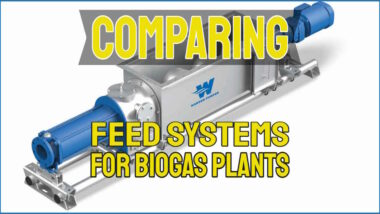


It’s quite intriguing. Obviously, not using slurry and other food waste means you have significantly greater control over the digestor’s “diet,” and hence, I assume, more efficient production.